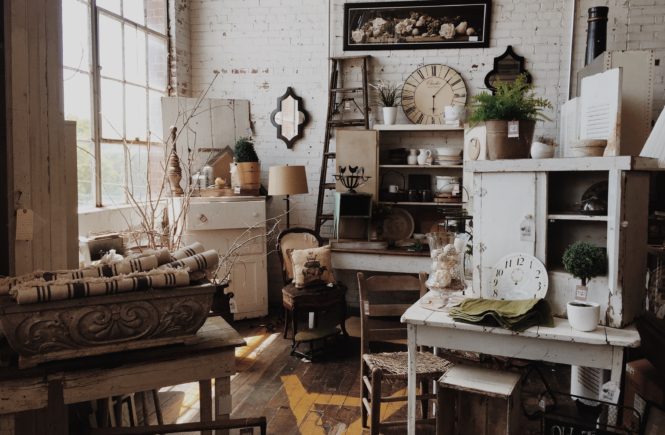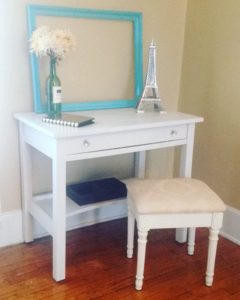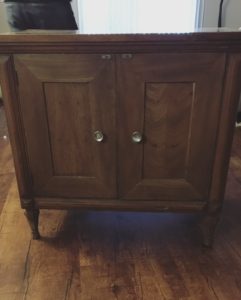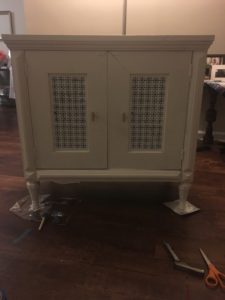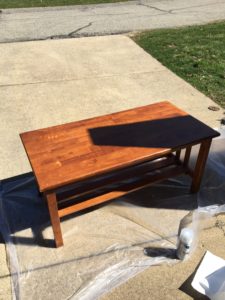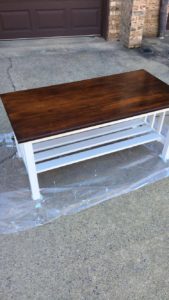*Disclosure: This post contains some affiliate links, meaning at no additional cost to you if you click through and make a purchase, I will earn commission. The opinions are completely my own, and I only refer to products that I absolutely love and have tested*
Let’s talk second hand goods for a moment. Specifically for the home. Maybe you are thinking “ew” like a lot of people i’ve encountered have, or you are thinking, “yes let’s talk about it!!”
Either way, I’m going to tell you why you should be buying them, and how to shop for them like a pro.
The funny thing is, many of my interior designer friends who design luxury homes have their own homes filled with thrift-found pieces. It’s no secret among designers how valuable an older piece or second hand piece of furniture is, but it can be challenging to know what to buy second hand, what not to buy, and how to look for them.
That’s why I’m going to break it all down for you. I am not the expert in antiquing, but when it comes to filling my home with second hand items, and thrifting my home together, I feel like a queen at it. When I go to an estate sale, thrift store, or flea market I get in a zone that you couldn’t shake me out of. My boyfriend actually prepares when he “assists” me at these, because he knows I will be zipping all around, completely in my element, and tuning the world out. I guess you could say the thrifty-life is my forte!
Let’s start with why you should buy second hand.
- It’s eco-friendly. This is a no brainer. Buying furniture used means you just eliminated a carbon footprint. It’s already manufactured, the energy was already used, there is no packaging or shipping required (typically). Reduce and reuse folks
- Construction is better. This is for the most part – buying a piece of solid wood furniture or something built even 20 years ago means you’re going to get quality construction [more on this later]
- You can customize it. Found a dresser you love, but it’s a yucky yellow-maple? You can literally do whatever you want to customize it: paint, stain, varnish, etc.
- It’s budget friendly. Buying second hand usually means there is room for negotiation with seller, and even if it isn’t, the price is astronomically lower than buying new.
Now to the fun part…How to buy second-hand home goods
WHERE TO BUY
- My go-to quick place to buy second hand home goods is Habitat for Humanity restores. (Check link to see if you have one near you!) They have locations all over the US and Canada. I like going here because no only am I getting a good deal on used furniture and home goods, but the proceeds are going to Habitat for Humanity. Another cool thing – they have huge sales! Yeah..sales on used furniture. That’s unheard of.
- Estate Sales – this is essentially a liquidation of a families house. Wether it be because they are moving or selling for a loved-one, I always have a lot of success at them. This is where you can find a lot of antiques and unique treasures, and the prices are usually very negotiable. Win-win!
- Flea Markets – I feel spoiled because here in Raleigh, we have a huge flea market every weekend where there is literally a sea of used home goods. If you don’t have one near you, they are usually worth the drive for larger ones! Make sure you go prepared with a vehicle to transport items, and cash at hand. This is where you’ll need to use those sharp negotiating skills babe!
- Craigslist & Facebook Market place – this is usually my last resort, because people can be a little unreliable on these platforms in my experience. But if you do find a cool find, make sure to jump on it quickly – in my experience, when an item is priced right on Craigslist or FB, it goes faster than hotcakes.
- The Curb – Yeah, you read that right. Now before you think i’m a bum or a trash digger, hear me out. I have found quite a few amazing pieces on the curb. Usually people don’t want to deal with dragging furniture to consignment shop, sell it online, or there is a minor thing that needs fixed and they don’t want to hassle with it. One man’s trash is another man’s treasure. #amiright? Word of the wise – make sure it’s actually trash and not lawn furniture…been there done that.
Like what you’re reading? Sign up for my newsletter to get even more DIY tips and lifestyle hacks! Promise, I hate being flooded with emails as much as you, I will never bomb your inbox. Just some love every once in a while ♥
[wpforms id=”57″]
WHAT TO BUY USED
So when I first starting thrifting my home together, I was in college, so it made sense. I couldn’t afford furniture, but I noticed other students also had no clue what things were worth. For instance, I’m currently typing at a desk that my neighbor in my college apartment put out on the curb after spring semester. It is a 1940’s solid mahogany desk with dovetail construction and a stamp with the original furniture manufacturer. I got it for free [ picture is at bottom of post! ]
After redoing this desk, along with some other small items I picked up at the Goodwill, I found my new love. Realizing I could make things look like new again, and just how I wanted for a fraction of the cost made me instantly addicted! Let me tell ya…there is something insanely rewarding about putting your own blood, sweat and tears into your home.
YES: Solid Wood Furniture
It’s no secret that construction of today’s furniture is crappy. Unless you are shelling out the big bucks, and I mean like $1,000 or more on a piece of furniture, chances are it’s particle board or plastic. So if you come across a piece of furniture that is real wood, and in good condition, that is a solid investment. Solid wood furniture can be sanded, refinished, and even if has been painted once, it can be repainted. It is also easy to tighten bolts or repair wood furniture
YES: Upholstered furniture with good bones
I added “good bones” in there because not all upholstery furniture is created the same. If you find a chair or sofa that is a beautiful shape or ideal size, sit in it. You’ll be able to feel if the frame is still strong and springs or foam is in tact, if those things are going, it’s best to pass it up unless you are fully confident you can fix it without spending a ton of money.
Another thing to watch out for is bugs – yes I had to go there folks. Upholstered furniture can harbor fleas, mites and bed bugs, so if you are going to buy something, steam it and scrub it clean before bringing it into your house. Better yet – if you can reupholster it, do it. You can can a beautiful new living room piece with brand new fabric for 1/4 of what a new one would cost.
YES: Artwork & decor
I’ve bought some pretty incredible frames and artwork from flea markets. This includes paintings, milk glass for my kitchen, an old Pepsi crate, and some mid-century ceramic pieces. Sometimes you need to look past certain features. For instance, if you find a really creepy clown painting, but the frame is drool-worthy, don’t pass it up. Throw that picture out and repurpose the frame.
YES: Dinnerware
You’ll definitely need to inspect the dinnerware for chipping, chipping paint (that sounds safe to eat off right? that’s sarcasm by the way) and of course wash the crap out of it before you use it. But I have some insanely adorable green milk-glass glasses I found at an estate sale that I snagged for $0.50 each…only to see Target selling the same kind for $4.99 a glass. Ha! If you can find a set of dinnerware, that’s even better. Dinnerware includes anything copper too..think old copper pans (display purpose only) or apothecary jars. This is where you definitely get your savings worth!
YES: Wrought Iron and outdoor furniture
Don’t let a little rust make you run. There’s amazing products like Rust-Oleum that will protect products from further rust, remove rust, and cover up rust to make your furniture look like new. Outdoor furniture is extremely overpriced (in my opinion) new, so outdoor furniture fly’s off the shelf, so to speak, used. So if you see it and need it, snag it. Plus how fun to spray it a funky color!
WHAT NOT TO BUY USED
Let’s face it – you don’t want everything used..and here is my list of hard NO’s to used home goods.
NO: “Assembly required” furniture
If something was assembled at home, like IKEA furniture (I love you IKEA, but you are cheap enough to buy new) This furniture is usually particle board, can’t be repaired, and isn’t going to be able to be refinished. Unless it’s brand new and being sold that way second hand – like a new dresser out of the box that someone decided they didn’t want anymore – then pass on it!
NO: Mattresses
This shouldn’t even need to be said – but just no. No. Mattresses are homes to so many germs. As tempting as it seems to want to buy that Tempurpedic mattress from your neighbor, I’m telling you, just pass.
NO: Children’s furniture
This isn’t necessarily a hard no – but buying a vintage crib or rocking chair may seem innocent enough, but recalls could’ve been made, paint could chip off, or something could break and there is no manufacturer warranty to fall back on or number to call for new parts, so it’s best to steer on the side of pass and just be safe.
NO: Chipped Laminate and Veneer
Laminate and veneer furniture can be beautiful and is definitely making it’s step back into our homes again, but if it’s peeling majorly or a large piece is chipped, it’s not worth it. It can not be repaired, will not hold it’s value, and can’t be refinished at that point. Sorry Mid-Century dresser with chunk of veneer missing – you belong to the junkyard now.
I hope this helps you in your quest for used furniture. Don’t let a project intimidate you; refinishing or fixing furniture is way simpler than you think, and chances are you already have the tools needed!
Here are some of my favorite thrifty re-do’s!
[ Each one of them cost under $40 ]
P.S – Sharing is caring! Like this article? Share to Facebook or repin on Pinterest for future reference!
[wpforms id=”57″ title=”true”]

